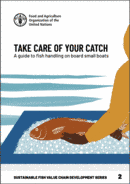Regulatory Environment for Misuse of Veterinary Drugs
The Codex Alimentarius Code of Practice for Fish and Fishery Products is a reference point for good practices that can become legal requirements. The Code identifies pesticides, herbicides, algicides, fungicides, anti-oxidants (added in feeds) antibiotics, growth promoters (hormones), other veterinary drugs and feed additives, metals leached from marine sediments and soil, from industrial wastes, from sewage or animal manures, all as potential important pre-harvest chemical food safety hazards.
Potential hazards that are specific to aquaculture products include residues of veterinary drugs in excess of recommended guidelines and other chemicals used in aquaculture production, and contamination of faecal origin where the facilities are close to human habitation or animal husbandry.
Veterinary drug residues can occur in aquaculture products when correct withdrawal times are not followed or when the sale and use of these compounds are not controlled.
Unless they can be reduced to an acceptable level by normal sorting and/or processing, no fish, shellfish and other aquatic invertebrates should be accepted if they are known to contain parasites, undesirable micro-organisms, pesticides, veterinary drugs or toxic, decomposed or extraneous substances known to be harmful to human health.
Controls on the Use of Veterinary Medicines
Controls on the Use of Veterinary Medicines
Many countries have strict controls on the use of veterinary medicines and other chemicals in aquaculture. Partly in response to the strict controls by major importers, countries such as Vietnam, Malaysia, Thailand, Sri Lanka, and China have adopted lists of chemicals approved for use, and guidelines for the proper use of chemicals are becoming important components of BMPs. Development of vaccines and disease free strains and maintenance of sensible stock densities have reduced the use of antibiotics.
A preventative approach to food safety risks has been introduced into aquaculture in some parts of the world. For example, certifications of good aquaculture practice (GAP) are good practice and can complement good manufacturing practice (GMP), hazard analysis critical control point (HACCP), and traceability from farm to table focus on the control of the hazard at all stages of food production instead of and product inspection.
At the international level, the Joint FAO/WHO Expert Committee on Food Additives (JECFA) is responsible for developing acceptable daily intake (ADI) values and maximum residue levels (MRLs) for veterinary drugs which are compatible with Good Veterinary Practices (GVP). These are adopted by the Codex Alimentarius Commission.
Key Publications
This study provides strategic orientations and recommendations for countries and suggests approaches for the World Bank’s role in a rapidly changing industry with high economic potential. |
| |
Joint FAO/WHO Expert Committee on Food Additives (JECFA) JECFA is an international scientific committee administered by FAO and WHO. It has been meeting since 1956 to evaluate safety of food additives, contaminants, naturally occurring toxicants and residues of veterinary drugs in food. | ||
What requirements should your product comply with to be allowed on European markets? This website provides information on the EU legal requirements that apply to fish and seafood products. It aims to help sellers understand the legal requirements and additional requirements that European buyers may ask. |
More Resources
More Resources
31 October 2023














